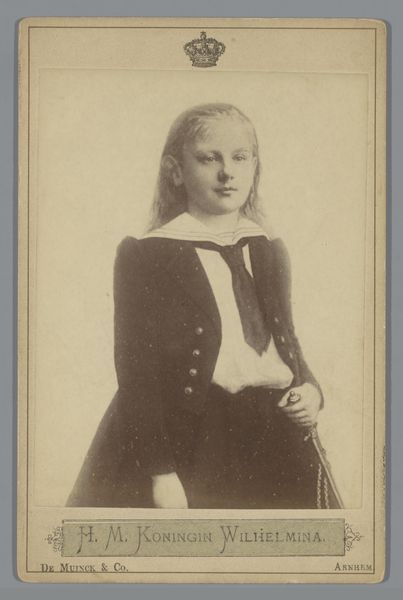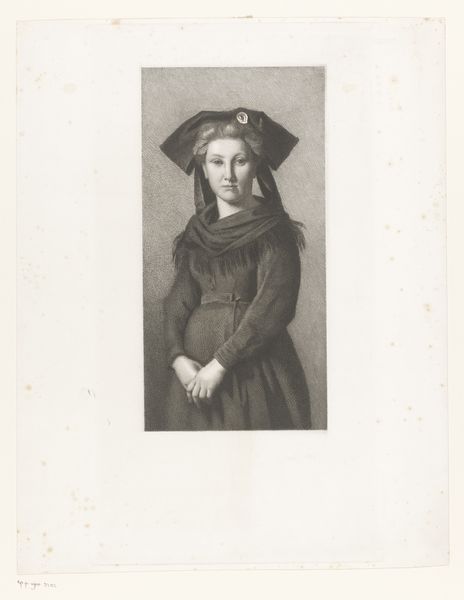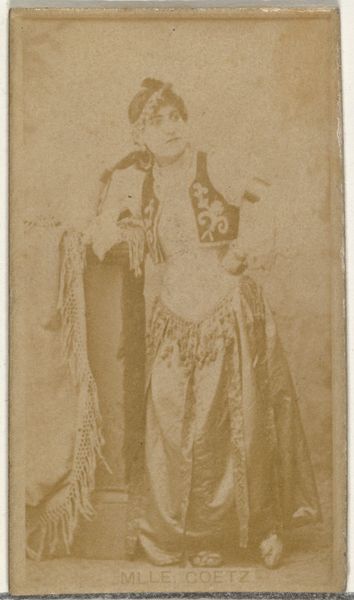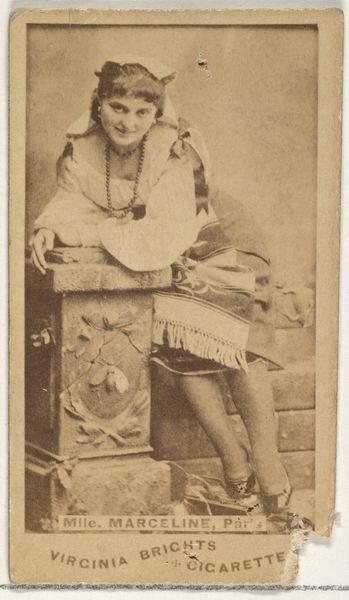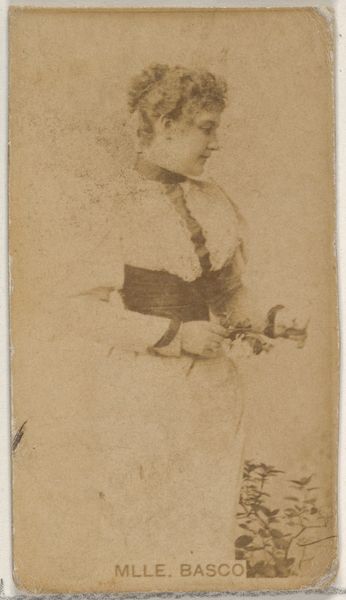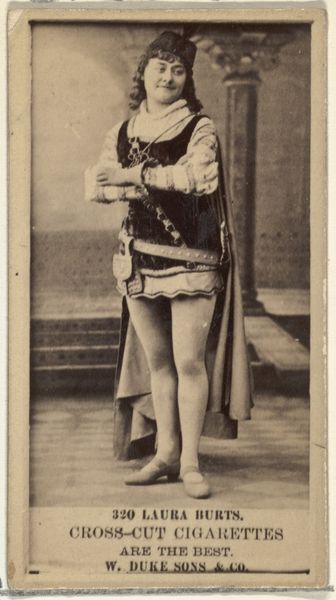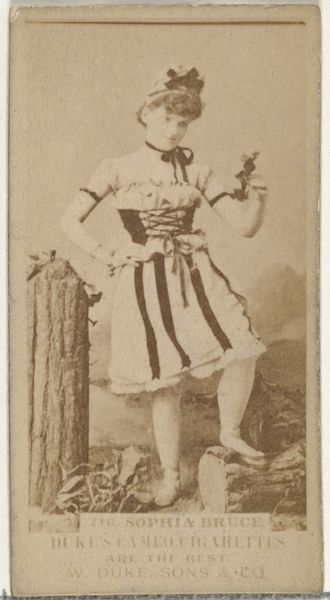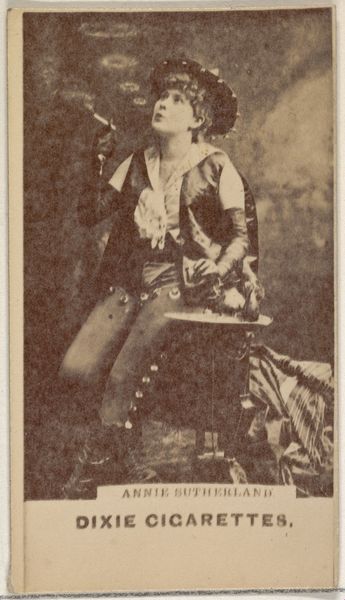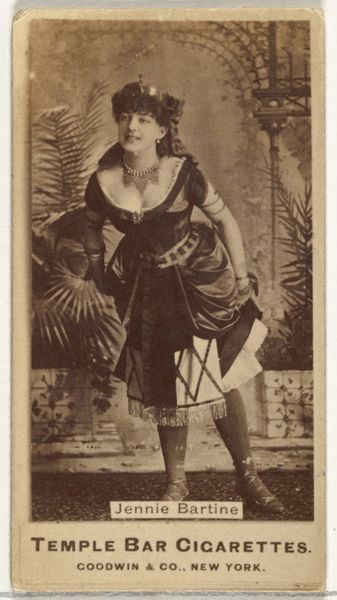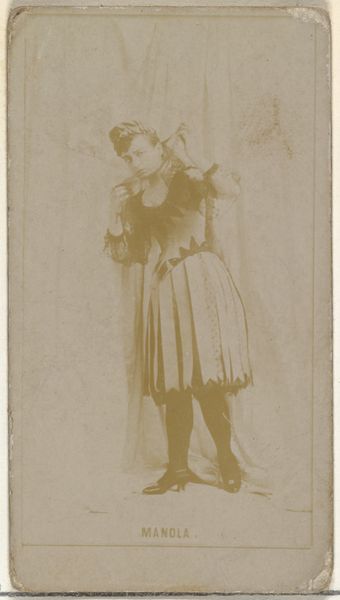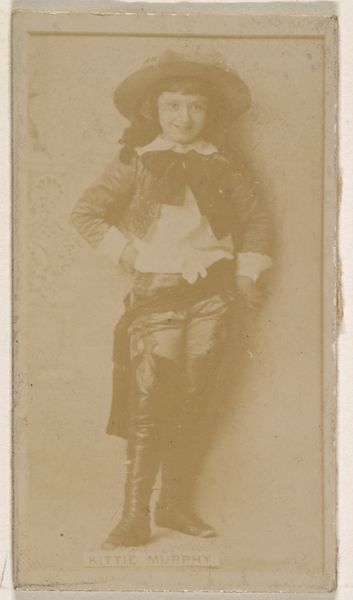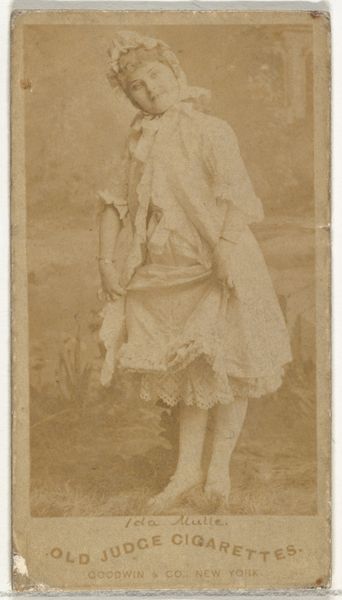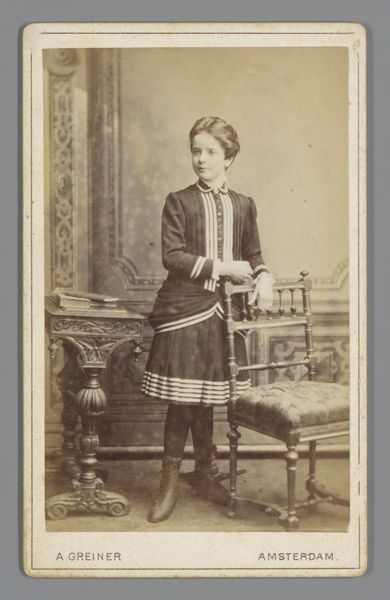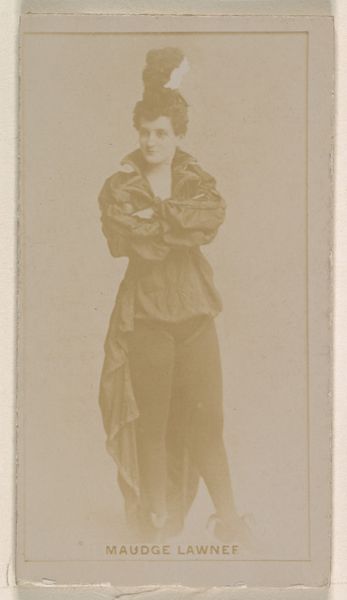
photography, gelatin-silver-print
portrait
studio photography
photography
gelatin-silver-print
19th century
academic-art
Dimensions: height 99 mm, width 64 mm
Copyright: Rijks Museum: Open Domain
Curator: Here we have "Fotoreproductie van Le petit matelot door Paul Delaroche", dating from somewhere between 1855 and 1885. It's a gelatin silver print residing here at the Rijksmuseum. Editor: Oh, he's adorable, isn't he? He has this kind of solemn little face peering out. It reminds me of childhood daydreams mixed with grown-up costumes. Curator: Delaroche, though known as a painter, clearly influenced this reproduction, playing with photographic portraiture's ability to capture, package, and commodify identity in a unique way during that period. Editor: Right, and the medium itself, this gelatin silver print…it democratized image-making to a degree. Suddenly, everyone wanted copies, mass consumption of 'art' that looked…refined. I wonder how the working class interacted with these portraits. Curator: Exactly. It is almost unsettling seeing how early photography, in its materiality, served the need to categorize and consume people. Think about the societal fascination with different social classes adopting specific aesthetics for these portraits. Editor: There is also labor woven in here. Someone had to mix the gelatin emulsion, coat the paper, carefully expose and develop it. Labor, material, the portrait itself - all commodities feeding into each other, mirroring perhaps the era’s colonial reach. Curator: The sailor suit itself became a specific fashion statement too. Delaroche captured an idealized boy; the gelatin-silver printing transformed him into something tangible and reproducible for an audience yearning to grasp some idealised beauty in their mundane existence. Editor: I find myself pondering the labor involved in capturing and then producing such an image and who really had access to creating them and purchasing them in those days. Were the sailor clothes also made for mass production? What conditions were those created in? Curator: Absolutely vital questions! It draws us into considering who benefits from image-making, which stories are deemed important, and how that reflects societal inequalities during that era of rapidly changing industrial processes. It feels surprisingly pertinent today, actually. Editor: Definitely. Thanks for drawing all of this out into the surface. This visit certainly brought an entire perspective to a very straightforward photo of a sailor.
Comments
No comments
Be the first to comment and join the conversation on the ultimate creative platform.
